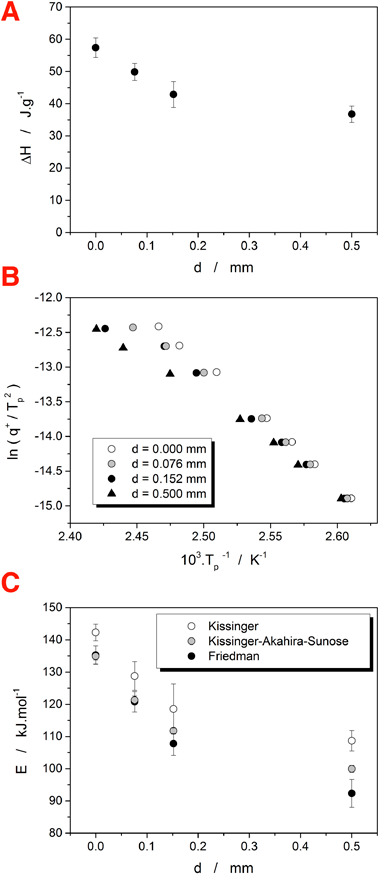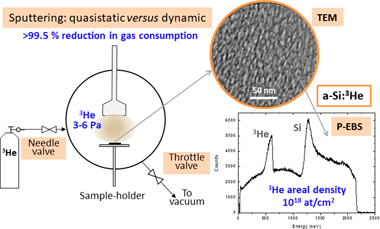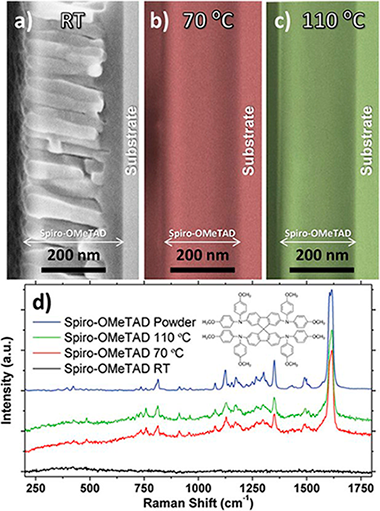Scientific Papers in SCI
2020
2020
Materiales Avanzados
New waste-based clinkers for the preparation of low-energy cements. A step forward toward circular economy
Martinez-Martinez, S; Perez-Villarejo, L; Eliche-Quesada, D; Sanchez-Soto, PJ; Christogerou, A; Kanellopoulou, DG; Angelopoulos, GNInternational Journal of Applied Ceramic Technology, 17 (2020) 12-21
Show abstract ▽
This paper describes the use of industrial wastes arising from different production processes of the ceramic and marble industries as raw materials for the design and formulation of new cement clinkers with a high content of dicalcium silicate (Belite). The aim was to reintroduce these wastes in the industrial sector and take advantage of them for a greater environmental benefit, as indicated by the principles of the circular economy. Formulations containing 2.5, 5 and 10 wt% of chamotte and marble sludge, respectively, and a waste-free formulation have been designed to obtain clinkers with a content of dicalcium silicate higher than 60 wt%. The different blends have been studied up to a maximum temperature of 1390 degrees C by Thermal Analysis. Other techniques such as XRD, XRF, Modified Bogue Equation, Quality Indexes (LSF, AM, SM) and Optical Microscopy have been used for the study and characterization of industrial wastes, the raw materials and the high belite-type cement dosages. The results indicate that this type of cements can be designed using different types of wastes and in this way reduce the environmental impacts caused by the extraction of raw materials and the deposition of the wastes in landfills, improving the circular economy of the construction industry.
January, 2020 | DOI: 10.1111/ijac.13390
Reactividad de Sólidos
Obituary: Prof. José Manuel Criado
Perez-Maqueda, LA; Real, C; Gotor, FJ; Alcala, MD; Malek, J; Koga, NJournal of Thermal Analysis and Calorimetry, (2020)
Show abstract ▽
Reactividad de Sólidos
Influence of DSC thermal lag on evaluation of crystallization kinetics
Svoboda, R; Maqueda, LP; Podzemna, V; Perejon, A; Svoboda, OJournal of Non-Crystalline Solids, 528 (2020) 119738
Show abstract ▽

Influence of added thermal resistance on crystallization kinetics, as measured by differential scanning calorimetry (DSC), of the Se70Te30 glass was studied. The increase of thermal resistance was achieved by adding polytetrafluorethylene discs of different thicknesses (up to 0.5 mm) in-between the DSC platform and the pan with sample. Increase of the thermal resistance led to an apparent decrease (by more than 30%) in the crystallization enthalpy. Significant change of model-free kinetics occurred: apparent activation energy E of the crystallization process decreased (by more than 20%) due to the DSC data being progressively shifted to higher temperatures with increasing heating rate. The model-based kinetics was changed only slightly; the DSC peaks retained their asymmetry and the choice of the appropriate model was not influenced by the added thermal resistance. The temperature shift caused by added thermal lag was modeled for the low-to-moderate heating rates.
January, 2020 | DOI: 10.1016/j.jnoncrysol.2019.119738
Materiales Nanoestructurados y Microestructura
Low gas consumption fabrication of He-3 solid targets for nuclear reactions
Fernandez, A; Hufschmidt, D; Colaux, JL; Valiente-Dobon, JJ; Godinho, V; de Haro, MCJ; Feria, D; Gadea, A; Lucas, SMaterials & Design, 186 (2020) 108337
Show abstract ▽

Nanoporous solids that stabilize trapped gas nanobubbles open new possibilities to fabricate solid targets for nuclear reactions. A methodology is described based on the magnetron sputtering (MS) technique operated under quasistatic flux conditions to produce such nanocomposites films with He-3 contents of up to 16 at.% in an amorphous-silicon matrix. In addition to the characteristic low pressure (3-6 Pa) needed for the gas discharge, the method ensures almost complete reduction of the process gas flow during film fabrication. The method could produce similar materials to those obtained under classical dynamic flux conditions for MS. The drastic reduction (>99.5%) of the gas consumption is fundamental for the fabrication of targets with scarce and expensive gases. Si:He-3 and W:He-3 targets are presented together with their microstructural (scanning and transmission electron microscopy, SEM and TEM respectively) and compositional (Ion Beam Analysis, IBA) characterization. The He-3 content achieved was over 1 x 10(18) at/cm(2) for film thicknesses between 1.5 and 3 mu m for both Si and W matrices. First experiments to probe the stability of the targets for nuclear reaction studies in inverse kinematics configurations are presented.
January, 2020 | DOI: 10.1016/j.matdes.2019.108337
Nanotecnología en Superficies y Plasma
Enhanced Stability of Perovskite Solar Cells Incorporating Dopant-Free Crystalline Spiro-OMeTAD Layers by Vacuum Sublimation
Barranco, A; Lopez-Santos, MC; Idigoras, J; Aparicio, FJ; Obrero-Perez, J; Lopez-Flores, V; Contreras-Bernal, L; Rico, V; Ferrer, J; Espinos, JP; Borras, A; Anta, JA; Sanchez-Valencia, JRAdvanced Energy Materials, (2020) 1901524
Show abstract ▽

The main handicap still hindering the eventual exploitation of organometal halide perovskite-based solar cells is their poor stability under prolonged illumination, ambient conditions, and increased temperatures. This article shows for the first time the vacuum processing of the most widely used solid-state hole conductor (SSHC), i.e., the Spiro-OMeTAD [2,2 ',7,7 '-tetrakis (N,N-di-p-methoxyphenyl-amine) 9,9 '-spirobifluorene], and how its dopant-free crystalline formation unprecedently improves perovskite solar cell (PSC) stability under continuous illumination by about two orders of magnitude with respect to the solution-processed reference and after annealing in air up to 200 degrees C. It is demonstrated that the control over the temperature of the samples during the vacuum deposition enhances the crystallinity of the SSHC, obtaining a preferential orientation along the pi-pi stacking direction. These results may represent a milestone toward the full vacuum processing of hybrid organic halide PSCs as well as light-emitting diodes, with promising impacts on the development of durable devices. The microstructure, purity, and crystallinity of the vacuum sublimated Spiro-OMeTAD layers are fully elucidated by applying an unparalleled set of complementary characterization techniques, including scanning electron microscopy, X-ray diffraction, grazing-incidence small-angle X-ray scattering and grazing-incidence wide-angle X-ray scattering, X-ray photoelectron spectroscopy, and Rutherford backscattering spectroscopy.
January, 2020 | DOI: 10.1002/aenm.201901524
- ‹ previous
- 109 of 410
- next ›














